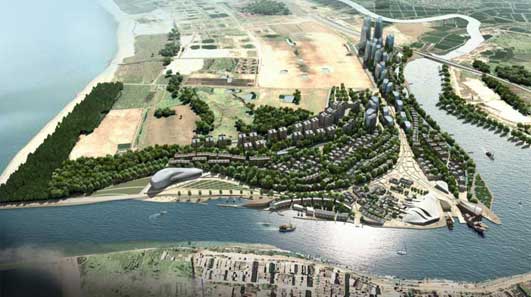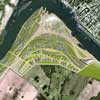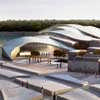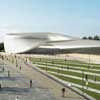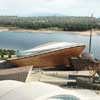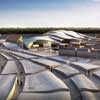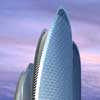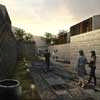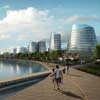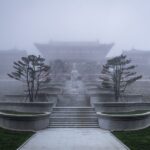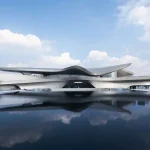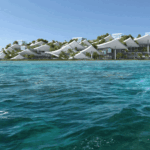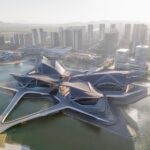Tanmen Fishing Museum Hainan, Building, Southern China Architecture Design
Fishing Culture Centre & Museums, China : Hainan Building
Building in Southern China – design by Office for Architectural Culture (OAC)
19 Feb 2013
Tanmen International Oceanic Fishing Culture Centre and Museums in Hainan, China
Design: Office for Architectural Culture (OAC)
Location: Hainan Province, Southern China
Office for Architectural Culture (OAC) complete the master plan and architectural concepts for a prestigious International Oceanic Fishing Cultural Centre and Museums in China
The London-based architectural practice Office for Architectural Culture has recently completed the master plan and architectural concept of the prestigious 650,000 m2 Tanmen International Oceanic Fishing Culture Centre and Museums project on the southern island of Hainan, China.
OAC was commissioned in November 2011 by the client Yujiao Cultural & Tourist Development to design the master plan and architectural concept, following a closed international competition.
Charles Phu, Design Director / founder of Office for Architectural Culture, said: ‘this is one of the largest architectural and master plan projects in Asia focused around an important fishing village with a rich heritage. Our aim is to create ‘’a living museum’’ integrating the old and the new, visitors, local fishermen and fishing villagers, the Chinese and localised Western cultures. It brings together the sites history and heritage paving the way for a rich and prolonged future.’
The fishing village, called Tanmen, is renowned for the historic navigation manual developed and maintained by the village’s fishermen since the 14th century. It demonstrates the fishermen’s deep-oceanic fishing knowledge and maritime navigation skills. The fishermen from this South China Sea village and the port of Tanmen, have travelled the South China Sea, the Southeast Asian regions as far as the Indian Ocean since the late medieval ages. They are also one of the key protagonists of the South China Sea conflicts in the recent years.
Roger Whiteman, the Managing Director of the project, explained: ‘Preservation and re-vitalisation of the existing historic village buildings on the site is an important cultural statement for this project. These historic buildings are good examples of architectural cultures coming together, of Chinese, Asian and European styles successfully uniting in harmony under the night skies.’
The chairwoman and client for the project Guo Kai, successfully achieved World Intangible Heritage listing by UNESCO for the weavings of the local aboriginal people, Li’s brocade. She has set out a plan aimed at getting the Tanmen Fishermen’s historic navigation manual, ‘Geng-lu-bu’, also listed by UNESCO.
The project site area is 650,000 sqm and includes an artificial island within the second phase of the project. The total building area is approximately 325,000 sqm. It consists of four museums, along with other uses as follows:
– Fishermen’s Culture Museum (11,500 m2) (including a new museum buildings and a number of historic village buildings)
– Old Fishing Vessel Museum (4,500 m2)
– Fishing Cultural Research Centre / Sea Ceramic Museum (1,300 m2)
– Oceanic Fishing Cultural Museum / International Oceanic Fishing Culture Exchange & Conference Centre (10,200 m2 floor area, adjacent to a Mazu Plaza and amphitheatre for performances)
Other uses in the project include:
– New fishing village
– 5-star Fishermen’s Boutique Hotel with 30 quest rooms
– Fishermen Theme Club Houses
– Sailors Resort
– Cultural commercial street (including shops, tea houses/bars, restaurants etc)
– Yacht Club
– Sea-fishing Club
– Residential (villas and tall residential buildings up to 100m)
– Staff dormitories
The Fishermen’s Culture Museum consists of a wave-shape new building and a number of existing historical village buildings, both of which are interlaced both architecturally and functionally. Alongside exhibitions of the local fishing history, fishermen’s stories, its cultural heritage and the navigation manual ‘Geng-lu-bu’, it offers visitors opportunities to witness and participate in the local fishing villagers’ daily life. The central cultural plaza is also part of this living museum, centred by the village’s three best-maintained historic courtyard buildings.
The Old Fishing Vessel Museum features a boat shape and vessel-inspired structures. With its façade finished by mixture of old boat timber and weathered timber, the museum has a main vessel exhibition hall, which can house a 60-tonnes fishing vessel and two small ones with its internal dry dock, surrounded by ‘gallery’ balconies, and is connected to a large antique fishing vessel, moored adjacent to the building, which also houses exhibition spaces. A renovated boat building/repair factory is also part of the museum.
The Fishing Culture Research Centre / Sea Ceramics Museum provides research spaces and facilities on oceanic fishing, its history and cultures, as well as ‘sea ceramics’. The Sea Ceramics Museum in the building exhibits ceramic wares and artworks discovered in the deep water of the South China Sea and Southeast Asia that sank with trading ships travelling between China, Southeast Asia, India, the Gulf, and Europe from 15th century to 19th century.
A sculptural park at the centre of the cultural zone, tells the stories of generations of Tanmen fishermen and local fishing families through its wave-shape sculptural landforms, which reflects the seas local fishermen have sailed over centuries.
The organic-shape, metal strips-clad 10,200 m2 Oceanic Fishing Cultural Museum & International Oceanic Fishing Culture Exchange & Conference Centre provides exhibition spaces and conference facilities for international and China-Taiwan fishing culture exchange events.
Along with the approx. 4,000 m2 exhibition spaces, it houses a large 1200-seat auditorium/theatre (which can be used for conferences and multi-media meetings), two multi-media conference halls (120 seats each), four multi-media conference halls (60 seats each) and several small conference rooms (30 seats each). The amphitheatre adjacent to it, which can be extended to the Mazu Plaza, is suitable for small, medium and large performances as well as performances on water.
Charles Phu explains that ‘it is a gallery where old and new buildings, landscape elements,
oceanic fishing culture, local religious beliefs, and locals’ daily life co-exist and are celebrated.
The new buildings, outdoor spaces and landscaping, inspired by the meanings of the historic
navigation manual ‘’Geng-lu-bu’’ and the greatness of what local fishermen have achieved
over centuries.’
‘The spirits of Tanmen’s ‘’East meets West’’ and ‘’Village life meets cultures from afar’’ are the key to our design for the project.’’, said Roger Whiteman.
‘To create a realm where new architecture and spaces are profoundly rooted in the village’s culture and heritage is our principal design approach.’ said the project designer Oliver Hempel.
OAC’s project design team is led by Design Director/founder Charles Phu, and managed by architect Roger Whiteman. The key design team members include the project senior designer Oliver Hempel (Associate Director of OAC), and Giedre M Kristaponyte, Paul Browning, Amelia Payton, Ariadna Roca, Carlos Agelet De Saracibar, and Jack Watson.
Acclaimed Germany-based Swiss artist Philippe Devaud is involved in advising the aesthetic principles, mist system, and conceptual story development of the engraving artworks of the sculptural park for the project.
Office for Architectural Culture engaged London-based museum consultant Real Studios for the project’s interactive cultural museums strategies and conceptual programming. The engineering consultants Ramboll (London) also has been engaged to assist in setting out sustainable and structural strategies.
Tanmen Fishing Museum Hainan Province images / information from Office for Architectural Culture (OAC)
Office for Architectural Culture (OAC)
Location: Hainan Province, China
Hainan Province Architecture – Latest Designs
Sanya Block 5
NL Architects
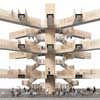
picture from architects
Housing in Hainan Province
Bike Pavilion
NL Architects
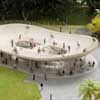
picture from architects
Bike Pavilion Hainan Province
Architecture in China
China Architecture Designs – chronological list
Chinese Architecture – Latest Designs
China Southern Airport City, Guangzhou
Woods Bagot
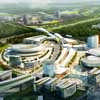
picture from architects
China Southern Airport City Guangzhou
Changzhou Culture Center Building, southern China
gmp · Architects

picture © Crystal Digital Technology
Changzhou Culture Center Building
Chengdu Museum
Sutherland Hussey

picture from architect
Chengdu Museum
CITIC Headquarters Tower, Hangzhou
Foster + Partners
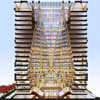
image © Foster + Partners
CITIC Headquarters Building China
South Sea Pearl, Haikou Bay, Hainan Island
Architects: Diller Scofidio + Renfro
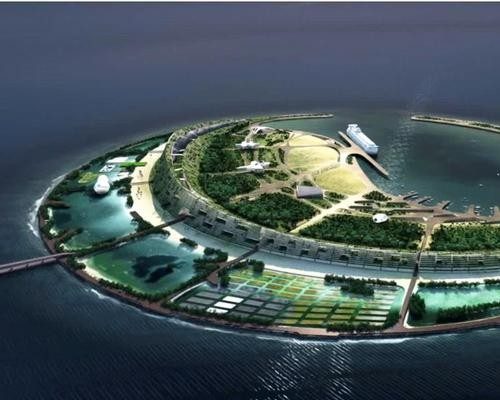
image from architect
South Sea Pearl Architectural Competition
Comments / photos for the Fishing Culture Centre & Museums China – Hainan Building page welcome

